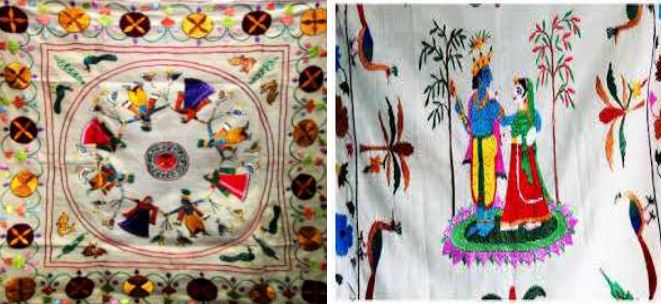
The word ‘Chamba Rumal’ implies to a peculiar visual art from that represents unique and charming embroidery done on a hand spun cloth with untwisted silken thread, which is greatly inspired from Pahari painting.
The tradition of this kind of pictorial embroidery was known and practised in some areas of Himachal Pradesh and Jammu which remained once important centers of Pahari painting.
Rumal is a Persian word which means a ‘kerchief‘, a square piece of cloth worn on the head or around the neck. The cloth employed for the embroidery was generally unbleached muslin or Khaddar.
The drawing was drawn in outlines with the fine brush by the accomplished Pahari painters sometimes, female embroider would prefer to draw the patterns and figures themselves.
This craft originated developed and flourished in the erstwhile state of Chamba in the 17th – 18th century A.D. when the fascinating art of painting was at its Zenith.
No knots are visible, and the embroidered Rumal can be viewed from both sides. It thus becomes reversible.
A simple stem stitch using black Silk thread is used to outline the figures.
Other stitches like the cross stitch, the button whole stitch, the long and short Stitch and the herring bone stitch, as well as pattern darning, are also used occasionally.
The stitch employed in the embroidery is called do-rukha, means double satin stitch which comes out exactly identical on both sides of the fabric.
Ras mandal is the famous subject of the rumal however hunting and wedding scenes, Nayika-Bheda, Shiva family, Vishnu’s Dasavatara and episodes from the Bhagvata Purana are other popular themes.
Chamba rumal is very famous within the country and out of country.
Chamba Rumal was declared world heritage by UNESCO on 31st October 2008 .